
Oh no! Your fantasy football receiver’s quarterback is out this week, and the backup will be starting! Surely your pass-catcher is doomed!
Sometimes, that’s true. But not always. How good the starter is, how good the backup is, the quality of the pass-catcher himself … it all factors in. Some receivers and tight ends prove to be QB proof (or as close to it as it gets). Others see their starter go down and become bench candidates.
I took the top 50 active wide receivers and tight ends in career PPR scoring and compared their production when paired with different starting quarterbacks. Who needs their top signal-caller to be his best self? And who could thrive with the starter, backup or me throwing him the ball?
Take the Quiz!
Over on Sporcle, I built a quiz using the data for today’s article. For those top 50 active receivers and tight ends, can you name the quarterback they have produced the highest PPR PPG average with during their starts?
Fantasy Football’s Most (and Least) QB-Proof Pass-Catchers
Mike Evans, WR, Tampa Bay Buccaneers
Career PPR points per game: 16.3 (168 games)

It just doesn’t matter. Mike Evans could have the best quarterback of all time, a career backup, an interception merchant or maybe me at quarterback, and he’d still be a solid back-end WR1 out there. His worst QB pairing — Josh McCown, at 15.4 PPR points per game over 11 games — is better than the best pairing for above-average receivers like Jaylen Waddle, Courtland Sutton or Diontae Johnson. The flip side, though, is that his best pairing at any real sample size, his 16.9 PPG in 31 games with Baker Mayfield (ignoring his 18.8 in four Mike Glennon games) is lower than the peak of other excellent receivers like DeAndre Hopkins, Davante Adams, Keenan Allen or Stefon Diggs. Mike Evans gets 1,000 yards every year. And he’s a very, very good fantasy receiver with every quarterback. He’s just never much above “very, very good.”
Ja’Marr Chase, WR, Cincinnati Bengals
Career PPR points per game: 19.6 (62 games)

Tee Higgins, WR, Cincinnati Bengals
Career PPR points per game: 14.2 (70 games)

I find this duo particularly interesting. Chase is maybe the best receiver in football … when Joe Burrow is starting. In an admittedly very small sample (seven games!), Jake Browning and Brandon Allen turned Chase pedestrian, with him seeing 6.5 targets and 63.8 yards per game with Browning (I’ll cull Allen’s single game here) compared to 9.8 targets and 91.2 yards with Burrow at the helm. Meanwhile, Higgins went from averaging 8.9 yards per target with Burrow at quarterback to 13.1 with Browning. Per our StatsHub, Higgins in 2023 averaged a 12.8-yard aDOT, compared to 8.6 yards for Chase. That year, Burrow averaged a 29.0% completion percentage on passes of 20-plus yards, while Browning had a 45.8%. In other words … Browning chucked it deep with more success than Burrow, and Higgins was the beneficiary.
Without question, the sample is too small to be definitive. We’re talking about five games. But if Burrow were to go down in 2025, I would at least consider bumping Higgins and dinging Chase a bit.
Mark Andrews, TE, Baltimore Ravens
Career PPR points per game: 12.4 (104 games)

Take out his nine games with Joe Flacco at the very start of his career, when he was battling Nick Boyle, Hayden Hurst and Maxx Williams for work at the tight end position, and Mark Andrews has actually had his worst PPG average with Lamar Jackson over the course of his career. In his 86 games with Jackson at the helm, Andrews has averaged 6.0 targets for 53.3 yards, compared to 8.9 targets and 72.0 yards in his eight Tyler Huntley games. (He also had an 8-125-1 line on 10 targets in his lone Josh Johnson game, but … one game.)
To be fair, some of Andrews’ Jackson games also came in his pre-stardom rookie year, but even without that 2018 sample, his Jackson sample is lower than his Huntley sample. The easy (but possibly correct) explanation for the difference is that a backup quarterback like Huntley would like to rely on the most reliable target, and given the Ravens have had decent-not-great receivers for the whole time, that’s definitely Andrews. And if that is the case, then the addition of an aging DeAndre Hopkins and little else this offseason won’t change much if Jackson has to go down and Cooper Rush has to start. No one wants a starter to miss time, but for Andrews’ fantasy managers, it might actually work.
DJ Moore, WR, Chicago Bears
Career PPR points per game: 13.7 (114 games)

I bet this one garners a lot of misses in the Sporcle quiz. It’s true — Moore not only has his highest career PPG average when Fields is his starting QB, it’s not particularly close. He’s averaged 19.0 points in Fields starts, compared to 16.2 with Kyle Allen, 13.9 with Caleb Williams and less with anyone else. Fields has a (not unearned) reputation for being a quarterback who uses his legs first and last, but Moore having his best numbers with Fields might bode well for Garrett Wilson, who, as the lone trustworthy receiver on an otherwise underwhelming receiving offense, has a lot in common with Moore during his Fields season.
Tyler Lockett, WR, Tennessee Titans
Career PPR points per game: 11.9 (161 games)

DK Metcalf, WR, Pittsburgh Steelers
Career PPR points per game: 13.9 (97 games)

These two now-former Seahawks have only had three starting quarterbacks apiece in their career, as Russell Wilson rarely missed time as a Seahawk, and when he did, Geno Smith replaced him briefly before replacing him long-term, and then he didn’t miss much time either. And for Lockett and Metcalf … it didn’t really matter who played quarterback. Both fared best with Wilson as the starter, but with a 1.2-point gap from best to worst on Metcalf’s resume and a 2.2-point game on Lockett’s, it’s close enough to even.
Lockett appears to be on the backside of his career now, set up to maybe be the WR2 for Cameron Ward in Tennessee, so if he continues on his former pace, consider it a surprise. Metcalf, though? He’s the clear WR1 in Pittsburgh, and even if we aren’t clear on who his quarterback will be right now (but it’ll be Aaron Rodgers, c’mon), it seems like his floor is high, his ceiling is low, and his variability is minimal.
Jerry Jeudy, WR, Cleveland Browns
Career PPR points per game: 11.1 (74 games)

*Phillip Lindsay technically started the game at “QB,” but Kendall Hinton was the game’s actual quarterback.
Jeudy was basically a bust in Denver, peaking at WR22 in 2022 and not reaching 1,000 yards in four years as a Bronco. And the bust allegations followed him to Cleveland, where he sat as the WR57 through Week 7. And then … Jameis time. Jameis Winston took over for the injured Deshaun Watson in Week 8 and started the next seven games. That gives us a nice split, seven games on each side. With Watson starting, Jeudy had 42 targets, 21 receptions, 266 yards and 1 touchdown. With Winston — again, in the same number of games — he jumped to 69 targets, 49 receptions, 786 yards and 3 scores. He had nearly as many yards in Week 13 alone (235) as he had in seven games with Watson.
Winston got benched after Week 15, and while Jeudy’s targets stayed high (he averaged 11.3 per game), he only totaled 177 scoreless yards in three games with Dorian Thompson-Robinson and Bailey Zappe starting. So was Jeudy’s success simply a product of Winston slinging the ball? With Winston in New York and Joe Flacco/Kenny Pickett/Dillon Gabriel/Shedeur Sanders taking over in Cleveland, the Browns better hope not.
David Njoku, TE, Cleveland Browns
Career PPR points per game: 8.5 (106 games)

2024 was the second year in a row that the Browns had some previously underwhelming pass-catcher absolutely go off with a veteran backup quarterback. Because before Jeudy and Winston were the electric duo last year, David Njoku took his game to a whole new level with Joe Flacco in 2023. Flacco started Weeks 13-17 for the Browns that year (before sitting for what was incredibly a meaningless Week 18 game). Before Flacco, Njoku was averaging 10.0 points per game, reaching 18 points in a game exactly zero times. With Flacco starting, Njoku averaged 18.2 points per game, including 27.1 in Week 14 and 26.4 in Week 15. It didn’t really carry over to 2024, as Njoku saw his targets per game rise from 7.7 to 8.8, but his yards per game drop from 43.9 to 39.2, owing to a 2-yard drop in yards per target (7.2 to 5.2). Flacco’s back for 2025. Do you trust that he alone can make Njoku work?





























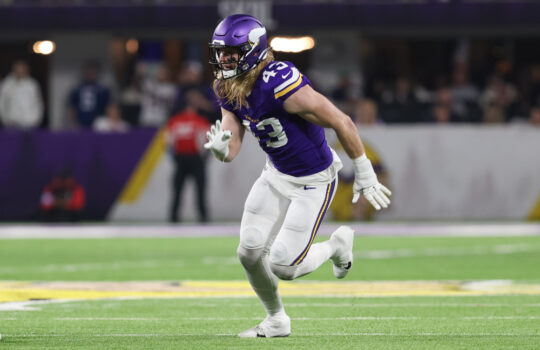



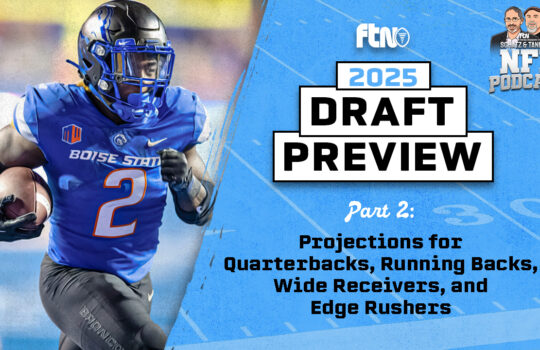

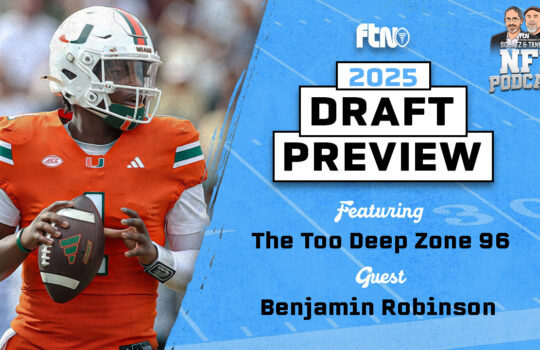
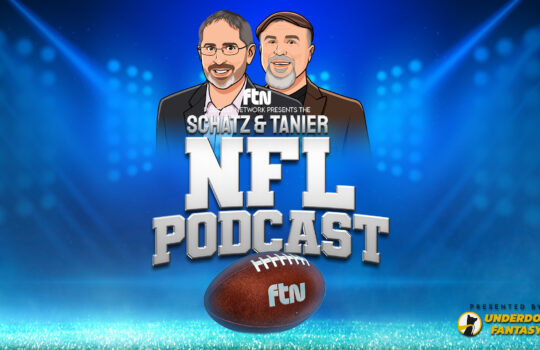




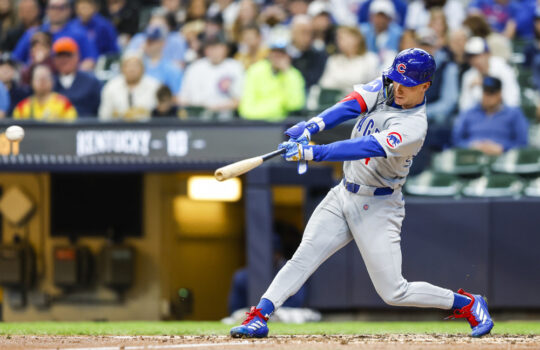



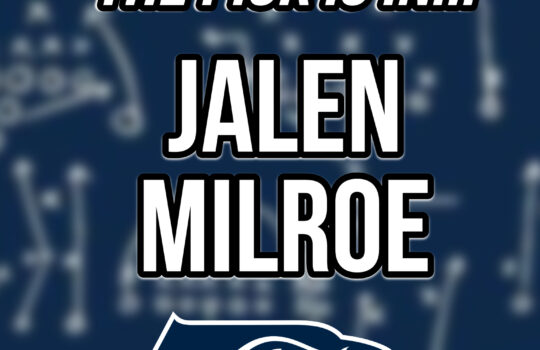

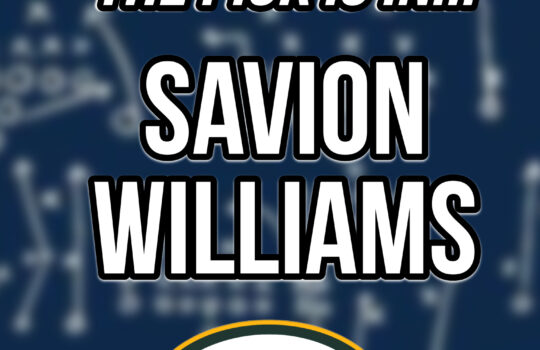


 New York Jets
New York Jets  New England Patriots
New England Patriots  Miami Dolphins
Miami Dolphins  Buffalo Bills
Buffalo Bills  Pittsburgh Steelers
Pittsburgh Steelers  Cleveland Browns
Cleveland Browns  Cincinnati Bengals
Cincinnati Bengals  Baltimore Ravens
Baltimore Ravens 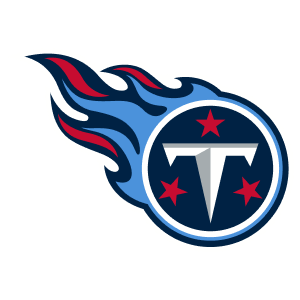 Tennessee Titans
Tennessee Titans  Jacksonville Jaguars
Jacksonville Jaguars  Indianapolis Colts
Indianapolis Colts  Houston Texans
Houston Texans  Las Vegas Raiders
Las Vegas Raiders  Los Angeles Chargers
Los Angeles Chargers  Kansas City Chiefs
Kansas City Chiefs  Denver Broncos
Denver Broncos  Washington Commanders
Washington Commanders  Philadelphia Eagles
Philadelphia Eagles  New York Giants
New York Giants  Dallas Cowboys
Dallas Cowboys  Minnesota Vikings
Minnesota Vikings  Green Bay Packers
Green Bay Packers  Detroit Lions
Detroit Lions  Chicago Bears
Chicago Bears  Tampa Bay Buccaneers
Tampa Bay Buccaneers  New Orleans Saints
New Orleans Saints  Carolina Panthers
Carolina Panthers  Atlanta Falcons
Atlanta Falcons  San Francisco 49ers
San Francisco 49ers  Seattle Seahawks
Seattle Seahawks  Los Angeles Rams
Los Angeles Rams  Arizona Cardinals
Arizona Cardinals 








 Boston Celtics
Boston Celtics  Brooklyn Nets
Brooklyn Nets  Philadelphia 76ers
Philadelphia 76ers  New York Knicks
New York Knicks  Toronto Raptors
Toronto Raptors  Chicago Bulls
Chicago Bulls  Detroit Pistons
Detroit Pistons  Milwaukee Bucks
Milwaukee Bucks  Cleveland Cavaliers
Cleveland Cavaliers  Indiana Pacers
Indiana Pacers  Orlando Magic
Orlando Magic  Atlanta Hawks
Atlanta Hawks  Charlotte Hornets
Charlotte Hornets  Miami Heat
Miami Heat  Washington Wizards
Washington Wizards  Denver Nuggets
Denver Nuggets  Minnesota Timberwolves
Minnesota Timberwolves  Oklahoma City Thunder
Oklahoma City Thunder  Portland Trail Blazers
Portland Trail Blazers  Utah Jazz
Utah Jazz  LA Clippers
LA Clippers  Golden State Warriors
Golden State Warriors  Los Angeles Lakers
Los Angeles Lakers  Phoenix Suns
Phoenix Suns  Sacramento Kings
Sacramento Kings  Dallas Mavericks
Dallas Mavericks  Houston Rockets
Houston Rockets  Memphis Grizzlies
Memphis Grizzlies  New Orleans Pelicans
New Orleans Pelicans  San Antonio Spurs
San Antonio Spurs 











